Search results for 'red pigments a 0'
-
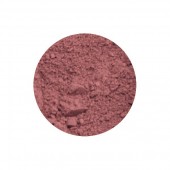
Madder Lake Genuine Pigment
Starting at: £10.20
NR9
Madder Lake pigment is derived from dye that has been extracted from the root of the madder plant, and attached to alum as a base. It has largely been replaced by synthetic alizarin pigments, but it is still used as an ingredient in some commercially-available paints. It provides a very transparent pigment, with a weak tinting strength, which can be used in all lime-free media, although it is very slow-drying in oil. It is fugitive to sunlight, so paintings containing Madder should be stored appropriately, but it remains one of the most lightfast plant-based pigments. It requires a wetting agent to aid dispersion.
Larger quantities are available by request
Learn More -
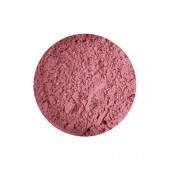
Rose Madder Genuine Pigment
Starting at: £15.80
NR9 Rose Madder is an alizarin lake pigment made by precipitating dye extracted from madder root onto an inert base. It has largely been replaced by synthetic alizarin pigments, but it is still used as an ingredient in some commercially-available paints. It provides a very transparent pigment, with a weak tinting strength, which can be used in all lime-free media, although it is very slow-drying in oil. It is fugitive to sunlight, so paintings containing Madder should be stored appropriately, but it remains one of the most lightfast plant-based pigments. It requires a wetting agent to aid dispersion. Larger quantities are available by request Learn More -
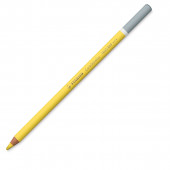
STABILO CarbOthello Pastel Pencils
Starting at: £2.05
STABILO CarbOthello is a chalk pastel coloured pencil range available in up to 60 colours. With its wonderfully dry and dusty stroke it is just like a chalk pastel in pencil format. It's very popular with artists, art students and people with creative hobbies. Its high pigmentation guarantees great luminosity and opacity as well as colour fastness and colour brilliance especially on dark backgrounds and delicate papers. What's more it can be sharpened to a very fine tip which make it ideal for detail. Colours can be dry mixed and blended which makes colouring more fun and special.
Learn More -

STABILO CarbOthello Pastel Pencil Sets
Starting at: £25.20
STABILO CarbOthello is a chalk pastel coloured pencil range available in up to 60 colours. With its wonderfully dry and dusty stroke it is just like a chalk pastel in pencil format. It's very popular with artists, art students and people with creative hobbies. Its high pigmentation guarantees great luminosity and opacity as well as colour fastness and colour brilliance especially on dark backgrounds and delicate papers. What's more it can be sharpened to a very fine tip which make it ideal for detail. Colours can be dry mixed and blended which makes colouring more fun and special.
Learn More -
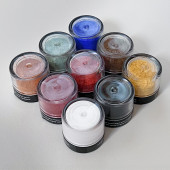
Cornelissen Iconographer's Pigment Set, with Aidan Hart
£41.00Nine pigments, especially selected for L. Cornelissen & Son by Aidan Hart, renowned icon painter, writer and lecturer. Learn More -
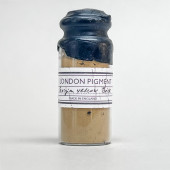
London Pigment, Georgian Yellow Brick Pigment
£18.00This warm earthy yellow is made from the quintessential London ‘stock brick’ of the 18th and 19th centuries. This pigment has a medium grain size and is transparent. ****Please note, these pigments are artisan made in small batches. Please email info@cornelissen.com for availability**** Learn More
-
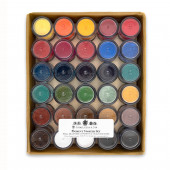
Cornelissen Pigment Set of 30 Colours
£130.00The perfect introduction to working with pigment, this selection of thirty pigments provides a wide range of colours for the production of paint. Each colour is supplied in a 15ml plastic jar, and the set includes both natural and synthetic colours. Recipes can be found on our homepage, with instructions for making different paints, including watercolour, egg tempera and oil paint. Learn More
-

Cornelissen Virtual Gift Voucher
£25.00The Cornelissen Virtual Gift Voucher will arrive with the recipient in the form of an email containing a virtual gift code. This code will be emailed immediately after the order is placed. Please see the range of values below. Vouchers can be redeemed fully or partly and do not expire.*Physical Gift Voucher (with a code for use only in the shop). Please contact us on 020 7636 1045. This physical voucher will be posted to the recipient.
*Combination Gift Voucher (with separate codes for use either online and in the shop). Please contact us on 020 7636 1045. This physical voucher will be posted to the recipient. Learn More
-
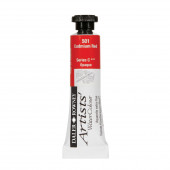
Daler-Rowney Artists Watercolour 5ml Tube
Starting at: £7.10
Artists' Water Colour is a professional quality water colour. Based on the finest modern and traditional pigments, it is precisely formulated to offer unparalleled performance and permanence. Learn More -
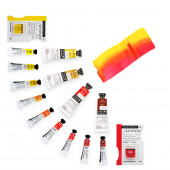
Daler-Rowney Artists Watercolour 15ml Tube
Starting at: £15.00
Artists' Water Colour is a professional quality water colour. Based on the finest modern and traditional pigments, it is precisely formulated to offer unparalleled performance and permanence. Learn More -
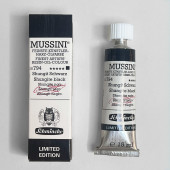
Schmincke Mussini Limited Edition Shungite Black 15 ml
£26.00Schmincke Mussini Limited Edition Ruby Red 15 ml Learn More -
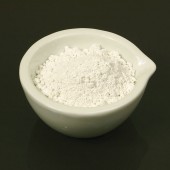
Gypsum
Starting at: £5.70
Gypsum is powdered Calcium Sulphate, a traditional ingredient in gesso grounds used in southern Europe. One of the advantages of preparing your painting surface with gypsum is that it allows for a particularly even absorption of the paint film. It can also be added to acrylic primers to increase absorbency or add tooth to a surface. Learn More -
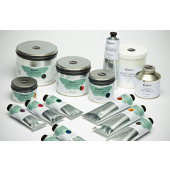
Caligo Safe Wash Relief Inks
Starting at: £10.55
Oil-based inks that wash away safely with liquid soap and water. Suitable for all types of relief or block printing, such as woodcut and wood engraving, letterpress and linocut. This range contains less than 1% of driers. For faster drying rates, add a small amount of cobalt or manganese driers. Formulated with excellent light fast pigments for non-toxic printmaking or solvent-free cleaning.
Learn More -
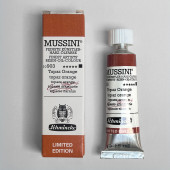
Schmincke Mussini Limited Edition Topaz Orange 15 ml
£26.00Topaz Orange Limited Edition 15 ml. is an opaque, richly coloured and sparkling brown orange, produced from the mineral phyllosilicate, one of the hardest naturally occurring minerals. Learn More -
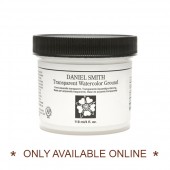
Daniel Smith Watercolour Ground Transparent 4oz
£10.30Daniel Smith Watercolour Ground creates a soft, absorbent watercolour surface with a slightly cottony texture that's similar to cold pressed paper. With this breakthrough archival quality ground, you can rescue flawed paintings, create new work on any surface, lift and scrub without damaging the painting surface. *Please note, this product is stored offsite. Please allow extra time for your order to be processed and dispatched. Learn More -
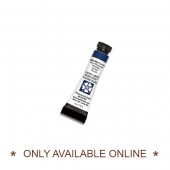
Daniel Smith Artists Watercolour 5ml Tube
Starting at: £7.20
The 5ml range consists of 88 colours and includes some of the fabulous Primatek colours that are handmade with authentic mineral pigments and Quinacridones with their pure, intense colour combining the power of staining pigments with the luminosity of the transparents. They also have the more traditional favourites. *Please note, this range is stored offsite. Please allow extra time for your order to be processed and dispatched. Learn More -
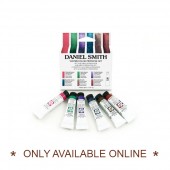
Daniel Smith Watercolour PrimaTek Set
£42.10Daniel Smith PrimaTek colours are unique paints made with pure, authentic mineral pigments that are mined directly from the earth and each one has a story. These colours have captured the imagination of artists for hundreds or even thousands of years. Their diversity is amazing. *Please note, this product is stored offsite. Please allow extra time for your order to be processed and dispatched. Learn More -
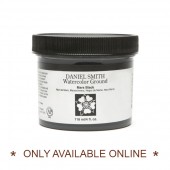
Daniel Smith Watercolour Ground Mars Black 4oz
£10.30Mars Black makes our Luminescent Watercolors “pop” and also provides an exciting, unexpected background for all your standard watercolour paints. Soft pastels, graphite and watercolour pencils show up beautifully on both the buff and black. *Please note, this product is stored offsite. Please allow extra time for your order to be processed and dispatched. Learn More -
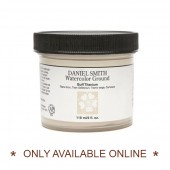
Daniel Smith Watercolour Ground Buff Titanium 4oz
£10.30Buff Titanium is great for value studies and provides a gorgeous, classic-looking surface for work in neutral grays, earthy reds, black and white. *Please note, this product is stored offsite. Please allow extra time for your order to be processed and dispatched. Learn More -
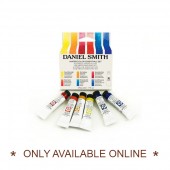
Daniel Smith Watercolour Essentials Set
£36.30The new set has six x 5ml transparent watercolours. The pigments were carefully selected to give you a wide range of colours and values. When mixed together the colours you can create are endless! The Essentials set contains Hansa Yellow Light, New Gamboge, Quinacridone Rose, Pyrrol Scarlet, Phthalo Blue GS, French Ultramarine in 5ml tubes. so you have both cool and warm Yellows, Reds and Blues. *Please note, this product is stored offsite. Please allow extra time for your order to be processed and dispatched. Learn More -
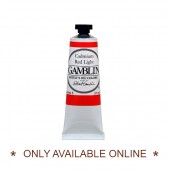
Gamblin Oil Colours 37ml
Starting at: £11.20
*Only available online*. Robert Gamblin started making artists' oil paints in 1980. Since then he has built a reputation as both an innovative and imaginative maker of some of the best oils on the market today. As well as usual single pigment colours you would expect, the range also includes an interesting selection of neutral greys, beautiful metallics and the truly innovative Radiant range of pastel colours. Combining science and artistry, Gamblin paints are truly exceptional. *Please note, this range is stored offsite. Please allow extra time for your order to be processed and dispatched. Learn More -
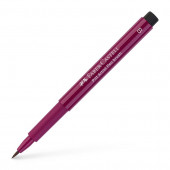
Faber-Castell Pitt Brush Pens
Starting at: £3.65
Flexible brush tip. Extremely fade resistant colours made with pigmented drawing ink. Waterproof and PH neutral. Learn More -
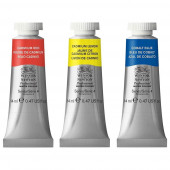
W&N Professional Watercolour 14ml Tube
Starting at: £16.00
Water colour, more than any other medium, reflects the unique characteristics of the pigments used and our Professional Water Colours use only the finest pigments, and are known for their brilliance, permanence and strength of colour. Learn More
-
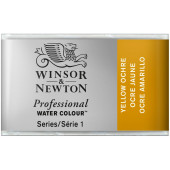
W&N Professional Watercolour Whole Pan
Starting at: £9.55
Water colour, more than any other medium, reflects the unique characteristics of the pigments used and our Professional Water Colours use only the finest pigments, and are known for their brilliance, permanence and strength of colour. Learn More
-
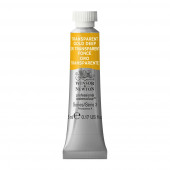
W&N Professional Watercolour 5ml Tube
Starting at: £8.25
Water colour, more than any other medium, reflects the unique characteristics of the pigments used and our Professional Water Colours use only the finest pigments, and are known for their brilliance, permanence and strength of colour. Learn More
-
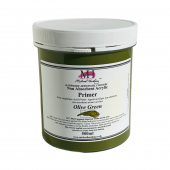
Michael Harding Non Absorbent Acrylic Primer - Colours
Starting at: £21.20
Michael Harding Non-Absorbent Acrylic Primer (NAAP) is a versatile product suitable for application on various surfaces, including linen, wood, MDF, and more. It is designed to create a robust, flexible, permanent, and intensely pigmented ground, making it an excellent choice for both acrylic and oil paints. Important Application Guidelines: Support Selection: NAAP should not be applied over surfaces treated with rabbit skin/hide glue or on unsound, flimsy supports such as cardboard. Opt for stable substrates to ensure the primer’s effectiveness. Not a Gesso: Please note that NAAP is a primer, not a gesso. As such, there is no need for additional gessoes, sizes, or other ancillary products when using NAAP. DIRECTIONS: Coat Application: Apply a minimum of two coats of NAAP to your chosen support, ensuring liberal coverage for optimal results. Dilution for Flow: If you desire increased flow, dilute NAAP with a mixture of 1 part water to 4 parts NAAP. This adjustment allows for customization based on your artistic preferences. Second Coat Application: Apply the second coat once the first coat is touch dry, typically after approximately 1 hour. This step contributes to the creation of a well-prepared painting surface. Additional Considerations: Suitable Supports: Do not use Michael Harding Non-Absorbent Acrylic Primer on flimsy or unsound supports. It is crucial to choose a stable and well-prepared surface for priming to ensure the longevity and integrity of your artwork. Canvas Weave Consideration: Avoid using this primer on canvases with a wide weave. The non-absorbent nature of the primer may not be suitable for canvases with a loose or open structure, compromising its effectiveness. Transparency Check: Before application, inspect your canvas material by holding it up to the light. If you can see light passing through the wefts (threads) of the canvas, it is not recommended to use Michael Harding Non-Absorbent Acrylic Primer. Opt for a more appropriate primer based on the transparency of your canvas. Learn More -
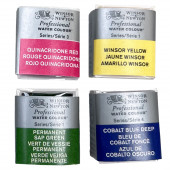
W&N Professional Watercolour Half Pan
Starting at: £7.90
Water colour, more than any other medium, reflects the unique characteristics of the pigments used. Winsor & Newton Professional Water Colours use only the finest pigments and are known for their brilliance, permanence and strength of colour. Learn More
-
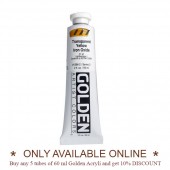
Golden Heavy Body Acrylic 59ml
Starting at: £11.70
The first acrylic colors offered by Golden Acrylic, Heavy Body paints are known for their exceptionally smooth, buttery consistency. The Heavy Body palette includes the largest assortment of unique pure pigments in a 100% acrylic emulsion available to professional artists. These colours offer excellent permanency and lightfastness. There are no fillers, extenders, opacifiers, toners, or dyes added. MULTI-BUY DISCOUNT Buy any five tubes of 59ml Golden Acrylic Heavy and get 10% discount. *Please note, this range is stored offsite. Please allow extra time for your order to be processed and dispatched. Learn More -
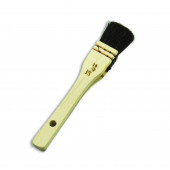
Sosaku Brush 24mm
£11.15Sosaku inking brush for working the pigments and glue paste onto the carved block for printing. These are made from horse hair and are traditionally prepared by splitting and softening the hair on shark-skin or sandpaper before printing. Brushes come in 3 sizes. Learn More -
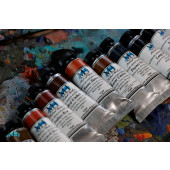
Michael Harding Watercolour 15 ml Tube
Starting at: £13.60
Michael Harding's new range of Professional Watercolours are formulated with the highest pigment concentration possible. A comprehensive range of 136 colours, including historical colours such as Lapis Lazuli and Rose Madder. These watercolours have impressive colour strength, vibrance, clarity, and longevity. Learn More





